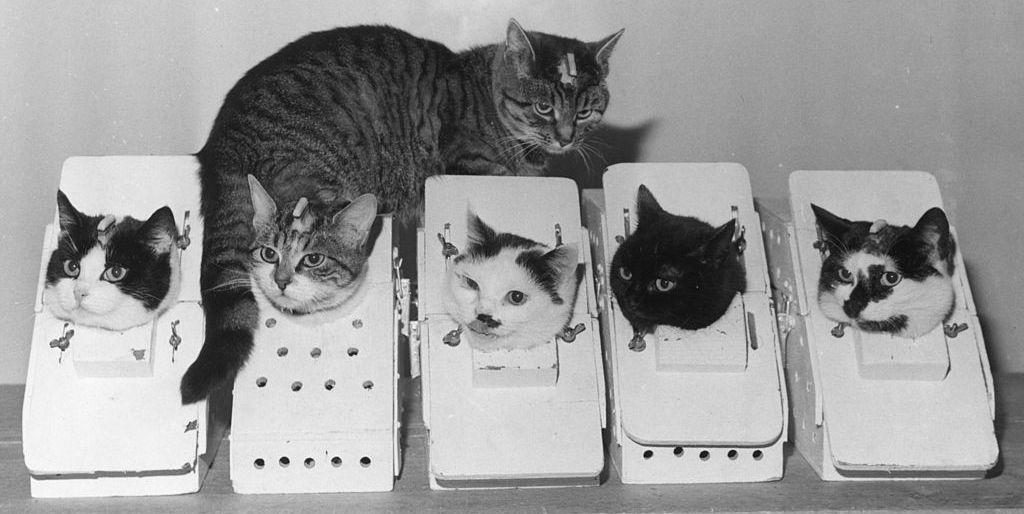Scientists Build Schrödinger's Cat on a Quantum Level

"Schrödinger's Cat" was originally meant to mock quantum theory.
However, quantum scientists have long seen the thought experiment as a challenge.
Now researchers have built the experiment on the quantum level using qubits.
Quantum mechanics often has difficulty breaking through to the general public, which is where the importance of "Schrödinger's Cat" lies. The thought experiment captured the general imagination, with scientists today still working to answer its challenges. Now a new study looks at how the cat in the famous puzzle could exist through a bit of quantum trickery.
First, let's recap "Schrödinger's Cat." In 1935, Austrian physicist Erwin Schrödinger was looking at a concept called a "superposition." Superposition is when two waves meet and overlap and interact, which can lead to different results based on the circumstances. The concept can be seen in the regular-sized world as well, in everything from water ripples on a lake to noise-canceling headphones.
Schrödinger wasn't a fan of the then-current understanding of quantum mechanics, which posited the idea of quantum superposition occurring until particles interacted with or were observed by the external world. To mock this idea, he created his own scenario, which he called "Cat Paradox":
One can even set up quite ridiculous cases. A cat is penned up in a steel chamber, along with the following device (which must be secured against direct interference by the cat): in a Geiger counter, there is a tiny bit of radioactive substance, so small, that perhaps in the course of the hour one of the atoms decays, but also, with equal probability, perhaps none; if it happens, the counter tube discharges and through a relay releases a hammer that shatters a small flask of hydrocyanic acid. If one has left this entire system to itself for an hour, one would say that the cat still lives if meanwhile no atom has decayed. The first atomic decay would have poisoned it. The psi-function of the entire system would express this by having in it the living and dead cat (pardon the expression) mixed or smeared out in equal parts.
It is typical of these cases that an indeterminacy originally restricted to the atomic domain becomes transformed into macroscopic indeterminacy, which can then be resolved by direct observation. That prevents us from so naively accepting as valid a "blurred model" for representing reality. In itself, it would not embody anything unclear or contradictory. There is a difference between a shaky or out-of-focus photograph and a snapshot of clouds and fog banks.
Schrödinger meant for his scenario to mock quantum superposition, but in time, many physicists began to see the cat paradox as far less ridiculous than he imagined. The newest case: A team of German, Italian, and American researchers just built the actual experiment with twenty qubits—units of quantum information, like a binary bit displaying a 0 or a 1 as information.
Binary bits can only be processed in a linear fashion, reading a 0 after a 1 in a certain pattern. But quantum mechanics allows qubits to exist in a coherent state of superposition, which is what the researchers wanted to explore. Within 20 qubits, there are over a million states of superposition.
"Qubits in the cat state are considered extremely important for the development of quantum technologies," explains Jian Cui, a physicist from the Peter Grünberg Institute at Jülich, in a press statement. "The secret of the enormous efficiency and performance expected of future quantum computers is to be found in this superposition of states."
The team placed 20 entangled quantum bits in a state of superposition, beating the old record of 14 set in 2011. They set them in place by using lasers to grab individual atoms in a process known as "optical tweezers."
"We practically inflated some atoms to such an extent that their atomic shells merge with the adjacent atoms to simultaneously form two opposite configurations, namely excitations occupying all even or odd sites," says Cui. "This goes so far that the wave functions overlap as in the analogy of Schrödinger's Cat and we were able to create the superposition of the opposite configurations which is also known as the Greenberger-Horne-Zeilinger state," in which three or more particles are entangled within each other at the quantum level.
They're not the only scientists to tackle Schrödinger's thought puzzle this year. Earlier in 2019, a team at Yale announced that they had discovered a way to save the cat.
You Might Also Like

